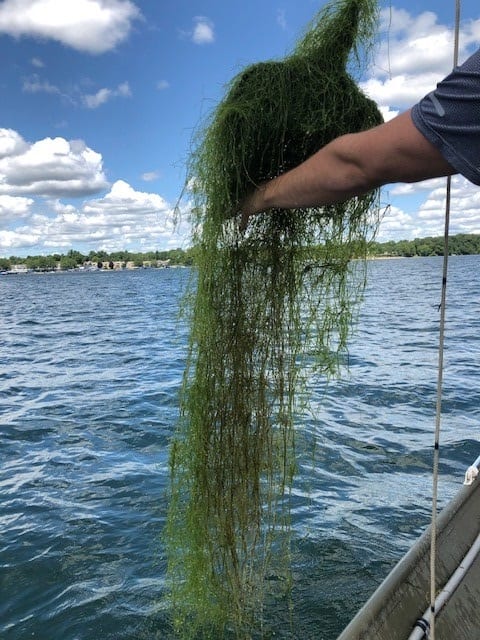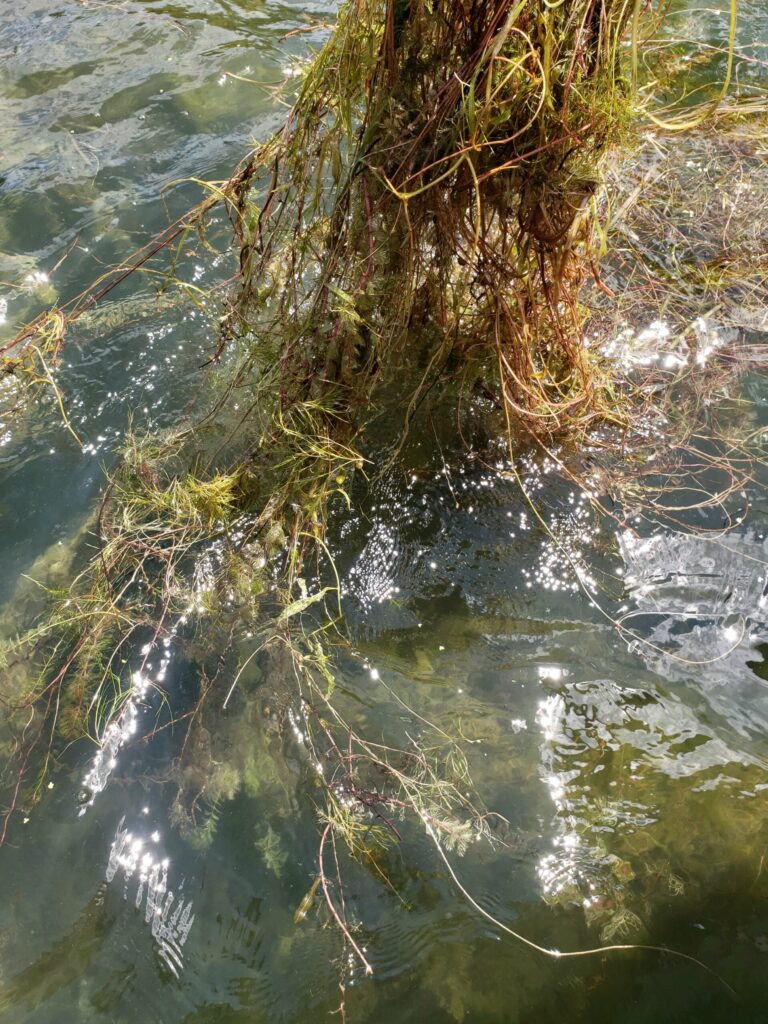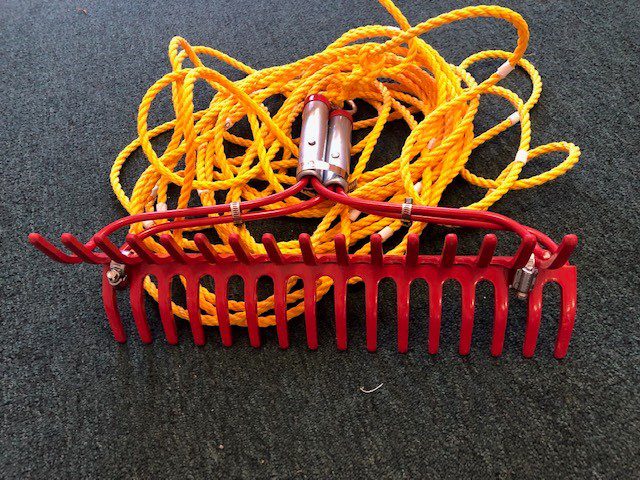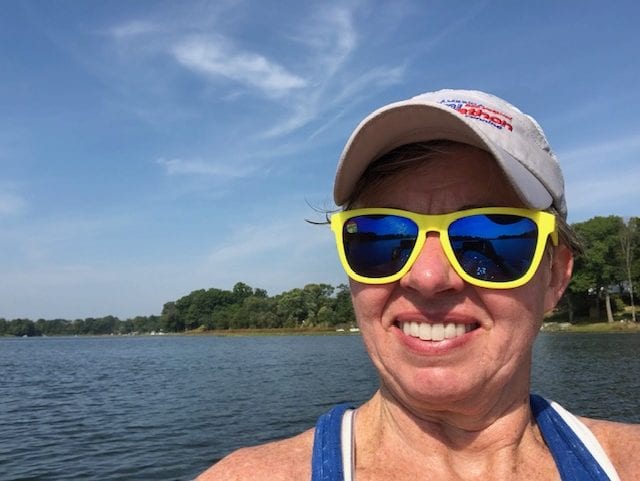Dave Keister, Aquatic Weed Control, led a public meeting on Tuesday, November 15th, concerning vegetation in Lake Maxinkuckee. There were six people attending in person and six people who attended via ZOOM.
Keister discussed the two invasive aquatic invasive plants of concern in Lake Maxinkuckee: Starry Stonewort and Eurasian Watermilfoil.
You can learn more about these plants and the role of aquatic plants in previous blogs.
Healthy Lakes Need Aquatic Plants | Lake Maxinkuckee Environmental Fund
Aquatic Vegetation Report 2021 | Lake Maxinkuckee Environmental Fund
Aquatic Vegetation Report – Part II | Lake Maxinkuckee Environmental Fund
Starry Stonewort (SSW)

Starry Stonewort has been documented in several areas in the lake (map). Based on recommendations from both Aquatic Weed Control and Indiana DNR, we are waiting to see how the lake handles the SSW infestation. Right now, we are only seeing it in deep water and it is not causing any issues with boating, fishing or swimming. We will continue to monitor so we can react quickly if it gets out of hand but will not be treating it with any chemicals at this time.
Eurasian watermilfoil (EWM)

Eurasian watermilfoil also has been documented in several areas of the lake. The 2021 survey showed over 31 acres of EWM, as compared to 2011 survey of 14 acres with the majority being in the channels. Based on the 2021 information, we were prepared to treat 31 acres in 2022, at a cost of approximately $27,000. However, 2022 showed an unusual and dramatic DECREASE of EWM, prior to any chemical treatment. Keister could only surmise that the native plants outcompeted the EWM. Ultimately, only about 13 acres were treated in 2022, at a significant savings over what was budgeted.
The Survey

A sampling rake is used for collecting vegetation samples, which is essentially a double-headed garden rake attached to a rope. The rake is dropped at the pre-determined GPS point and drug along the lake bottom for 10 feet. The rake is pulled up and given a score based on abundance and type of vegetation.
This is how we can track what is happening throughout the lake. We return to the same 100 GPS points each time and can compare rake scores. The weed beds are also marked with GPS coordinates and compared in size from year to year.
This kind of monitoring was done by LMEF in 2011, when Hydrilla was first discovered in Lake Manitou, to be on the lookout for it spreading to Lake Maxinkuckee. After three years, and thankfully no spread of Hydrilla, the monitoring was discontinued. However, there is a great benefit to resuming the monitoring. This allows us to track changes and respond quickly to new infestations and keep existing infestations under control.

Pretty Good Report Card
Of particular note in the report is the Species Diversity score. 1.0 is really good, .7 is average. Lake Maxinkuckee scored .85. This means that there are many different types of plants in the lake in a lot of different areas. This is a good indication of a healthy lake ecosystem.
The secchi disk reading in August 2021 was 13’ and August 2022 was 12’. Keister was surprised and impressed by those readings. He works on other lakes where it is not unusual to see readings of less than 5’.
Download Full Report or stop in the office to pick up a copy.
Working toward the preservation of an ecologically sound Lake Maxinkuckee and its surrounding watershed.

Hi, I’m Debbie Palmer. I received a BS in Horticulture from Purdue University. Here at LMEF, I am responsible for outreach presentations, monitoring the lake and it’s wetlands, project manager for restoration and research projects, and act as a community resource for all things related to the well-being of Lake Maxinkuckee and its surrounding watershed. I completed Indiana Watershed Leadership Academy, volunteer with the Indiana Clean Lakes Program, Hoosier River Watch and Marshall County Lakes and Waters and serve as a Board Member for Indiana Lakes Management Society.


Recent Comments